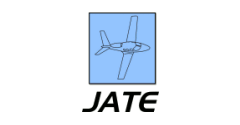Abstract
Aircraft’s constant operation in tough conditions necessitates the need for structural components of high strength yet low weight. Composite materials are being used as an alternative to conventional aluminum alloys because of their competitive strength-to-weight and stiffness-to-weight ratios. In this paper, the detailed design procedure of a light-aircraft composite material fuselage tooling in three dimensions is shown. In its operation, the layup tools provide a surface for the composite part which is the correct shape of the part and is stable through the cure cycle, and also providing a means of indexing the part for the next manufacturing operation. This aims to achieve the desired position accuracy and improve the efficiency of assembly procedures. All the parts are designed and measured using CATIA Version 5 software. The fuselage modeled here is a section of Beechcraft King Air 250. At the time of writing, the manufacturing process for the fabrication of this fuselage is entirely different. This design should be viewed as an alternative process as it would cut down weight and costs while improving safety.
Recommended Citation
Ekom, Miazor Fidelis
(2020)
"Tooling Design Modeling for Composite Fuselage of Beechcraft King Air 250 using CATIA,"
Journal of Aviation Technology and Engineering:
Vol. 9:
Iss.
2, Article 2.
Available at: https://doi.org/10.7771/2159-6670.1211
Included in
Aeronautical Vehicles Commons, Structures and Materials Commons, Systems Engineering and Multidisciplinary Design Optimization Commons



